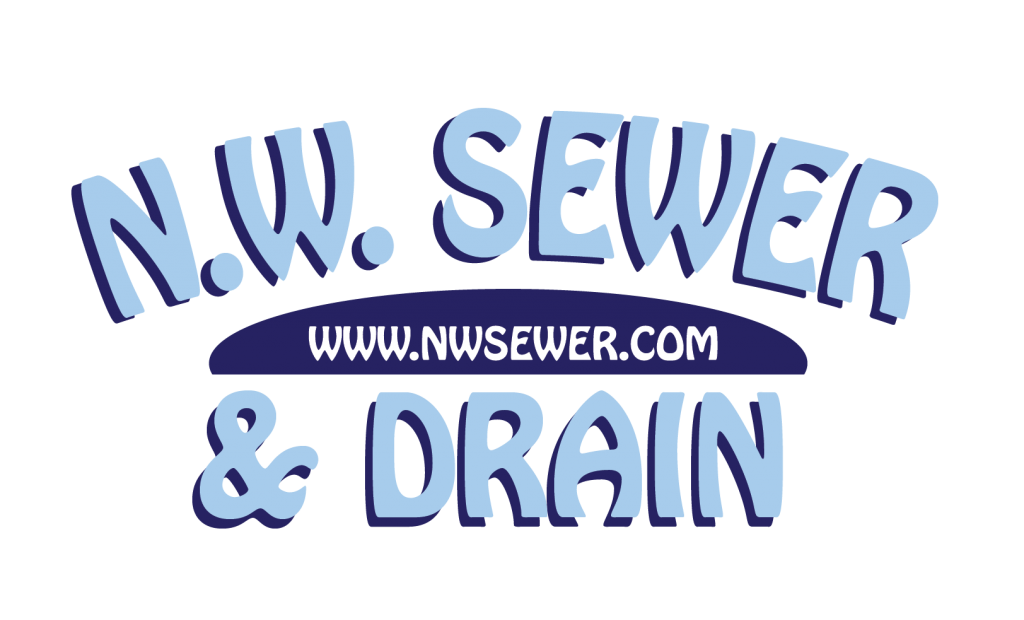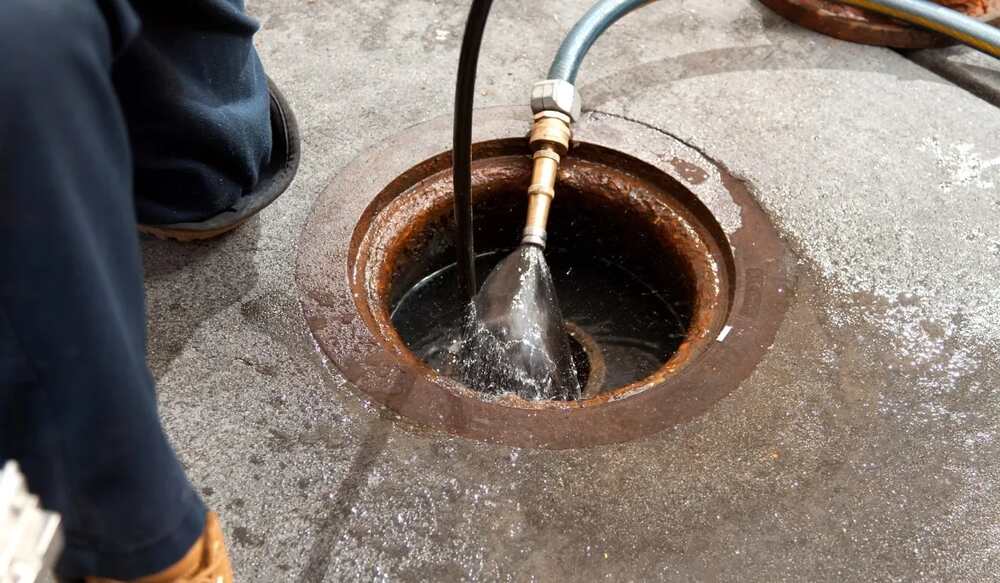Have you ever wondered where the water goes when it swirls down your shower drain? Understanding the journey of water from your shower drain to the sewer system and recognizing how debris can impact this journey is essential for maintaining a functional plumbing system. At NW Sewer and Drain, we are dedicated to helping you keep your pipes clear and your drains flowing smoothly. Here is an overview of the process of water drainage, the types of debris that can cause drain clogs and backups, and why regular pipe maintenance is crucial.
The Journey of Water from Your Shower Drain
When water leaves your shower drain, it embarks on a complex journey through your home’s plumbing system. Here’s a step-by-step breakdown of this process:
- Shower Drain to P-Trap
- The water first flows into the P-trap, a U-shaped pipe located directly beneath the shower drain. The P-trap holds a small amount of water that creates a seal, preventing sewer gases from entering your home.
- P-Trap to Branch Drain Line
- From the P-trap, the water moves into the branch drain line, which connects to other drains in your bathroom, such as the sink and toilet.
- Branch Drain Line to Main Drain Line
- The branch drain line leads to the main drain line, which runs vertically or horizontally through your home, collecting wastewater from all fixtures.
- Main Drain Line to Sewer Lateral
- The main drain line connects to the sewer lateral, a pipe that extends from your home to the municipal sewer system or a private septic tank.
- Sewer Lateral to Municipal Sewer System or Septic Tank
- Finally, the water travels through the sewer lateral to the municipal sewer system, where it is treated at a wastewater treatment plant, or to a septic tank, where it undergoes a biological treatment process.
How Debris Causes Backups
While this journey is designed to be smooth, various types of debris can interfere with the flow of water and lead to backups. Here are some common culprits:
- Hair
- Hair is one of the most common causes of shower drain clogs. It can accumulate over time, forming tangled masses that obstruct water flow.
- Soap Scum
- Soap scum can build up on the inner walls of pipes, narrowing the passage and creating a sticky surface that traps other debris.
- Grease and Oils
- Although more commonly associated with kitchen drains, grease and oils can make their way into bathroom drains. These substances solidify as they cool, creating blockages.
- Mineral Deposits
- Hard water contains minerals like calcium and magnesium that can accumulate in pipes, forming hard, crusty deposits that restrict water flow.
- Foreign Objects
- Small objects such as shampoo caps, razor covers, and other items can accidentally fall into the drain, causing blockages.
- Tree Roots
- Tree roots can infiltrate sewer lines through small cracks, growing and expanding inside the pipes, which can lead to severe blockages and pipe damage.
The Importance of Regular Pipe Maintenance
To prevent these types of debris from causing backups, regular pipe maintenance is essential. Here’s why maintaining your pipes should be a priority:
- Prevents Blockages
- Regular cleaning and maintenance can remove accumulated debris, preventing blockages and ensuring smooth water flow.
- Extends Pipe Lifespan
- Proper maintenance helps prevent corrosion, mineral buildup, and other forms of damage, extending the lifespan of your pipes.
- Reduces Repair Costs
- Preventative maintenance can catch potential issues early, reducing the need for costly emergency repairs.
- Improves Water Flow
- Clean pipes allow water to flow freely, improving the efficiency of your plumbing system and preventing slow drains.
- Protects Your Home
- Preventing backups and overflows can protect your home from water damage, mold growth, and unpleasant odors.
How NW Sewer and Drain Can Help
At NW Sewer and Drain, we offer a range of professional services to help you maintain your pipes and prevent backups:
- Hydro Jetting
- Our hydro jetting service uses high-pressure water to thoroughly clean the inside of your pipes, removing all debris and buildup.
- Camera Inspections
- We use advanced camera technology to inspect your pipes, identify blockages, and assess the condition of your plumbing system.
- Drain Cleaning
- Our expert technicians can clear any blockages in your drains, restoring proper water flow and preventing future issues.
- Preventative Maintenance Plans
- We offer customized maintenance plans to keep your plumbing system in top shape year-round, giving you peace of mind.
Learn More About Your Sewer System with NW Sewer and Drain
Understanding the journey of water from your shower drain to the sewer system and recognizing the impact of debris on this process is crucial for maintaining a functional plumbing system. Regular pipe maintenance can prevent blockages, extend the lifespan of your pipes, and protect your home from damage.
At NW Sewer and Drain, we are committed to providing the expert services you need to keep your drains clear and your plumbing system running smoothly. If you’re experiencing slow drains or want to learn more about our maintenance services, contact NW Sewer and Drain today.
Frequently Asked Questions
1. How does water flow from my shower drain to the sewer system?
When water leaves your shower drain, it passes through a P-trap, which holds water to block sewer gases. From there, it moves through the branch drain, into the main drain line, and eventually to the sewer lateral. This leads the water to either a municipal sewer system or a septic tank, where it undergoes treatment.
2. What causes clogs in shower drains?
Clogs are often caused by hair, soap scum, and grease buildup. Hair tangles easily, obstructing water flow, while soap scum sticks to the pipes’ walls, narrowing the passage. Occasionally, foreign objects like shampoo caps or razor covers can fall in, leading to blockages.
3. Can tree roots damage my sewer line?
Yes, tree roots can infiltrate sewer lines through small cracks, seeking water sources. Once inside, roots expand and grow, causing severe blockages and potentially damaging your pipes. Regular pipe inspections can help catch this early before major repairs are needed.
4. What is hydro jetting, and how can it help my drains?
Hydro jetting uses high-pressure water to thoroughly clean the inside of your pipes, removing debris, grease, and mineral buildup. It’s an effective solution for stubborn clogs and can restore the full function of your plumbing system.
5. Why is regular pipe maintenance important?
Regular pipe maintenance prevents clogs, extends the lifespan of your pipes, and saves you from expensive emergency repairs. By cleaning and inspecting your pipes regularly, you can avoid blockages, water damage, and slow drains.
6. How does soap scum affect my pipes?
Soap scum can accumulate on the inner walls of pipes, creating a sticky surface that traps other debris, such as hair and grease. Over time, this buildup can narrow the pipes and cause blockages, leading to slow drains or backups.
7. What’s the role of the P-trap in my plumbing system?
The P-trap is a U-shaped pipe under your shower drain that holds a small amount of water. This water forms a seal that prevents sewer gases from entering your home while still allowing wastewater to flow through to the main drain line.
8. How do mineral deposits cause pipe blockages?
Mineral deposits from hard water, especially calcium and magnesium, can accumulate inside your pipes, forming hard, crusty layers. These deposits reduce the pipe’s diameter, restricting water flow and increasing the chances of clogs and backups.
9. Can I prevent clogs in my shower drain?
Yes, you can prevent clogs by using drain covers to catch hair, avoiding the disposal of grease or oils down your bathroom drains, and regularly cleaning your drains to remove soap scum and buildup. Scheduling routine maintenance can also help prevent major blockages.
10. How do camera inspections help with pipe maintenance?
Camera inspections allow technicians to visually assess the inside of your pipes, identifying blockages, cracks, or tree root intrusions. This technology helps diagnose problems early, allowing for targeted repairs and avoiding unnecessary excavation.




